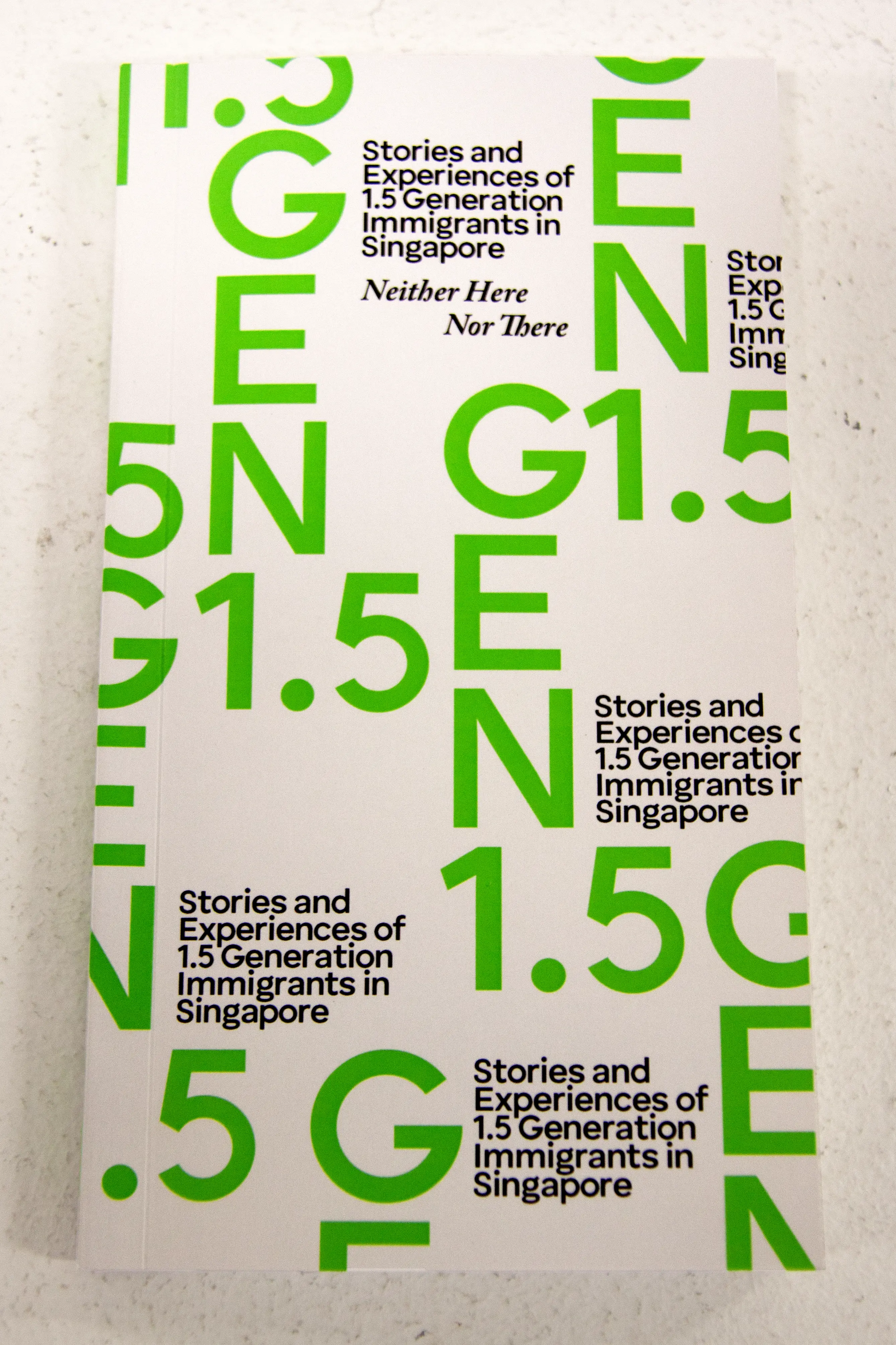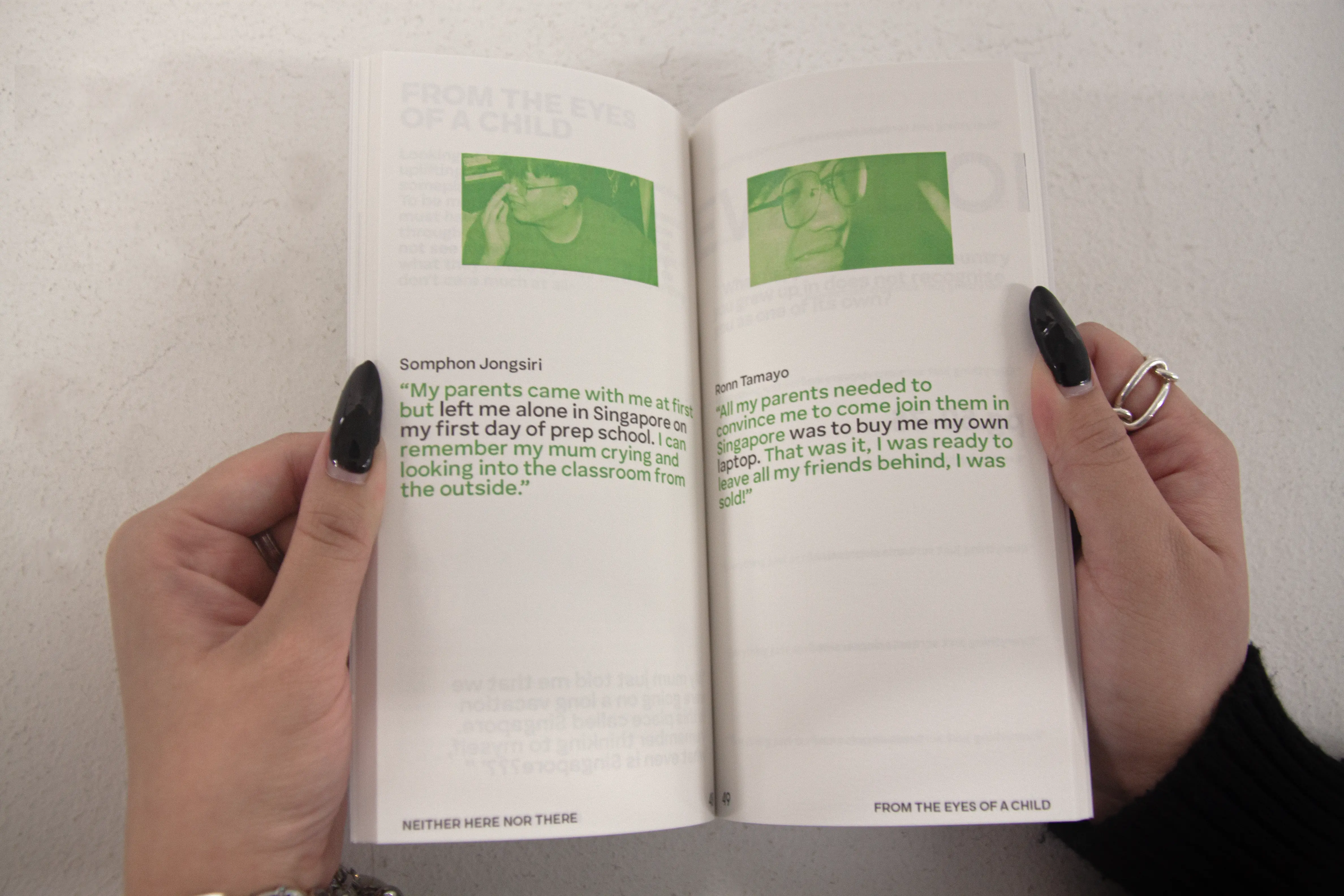Neither Here Nor There
Blanco Djan Christopher Nillas

Chris's project, Neither Here Nor There, is a discursive visual communication endeavour centred around the lives of 1.5 Generation Immigrants in Singapore. Despite comprising a significant portion of Singapore's youth population, this demographic often flies under the radar of public interest. Through object communication, in-depth interviews, and imagery, the project faithfully captures the nuanced experiences of these individuals, shedding light on both the positive and negative aspects of their lives. Kept intentionally open-ended, Neither Here Nor There is a sincere expression of desire to understand and celebrate the 1.5 Generation Immigrants.
What drew you to this “under the radar” demographic?
I was first curious about this topic because I had a friend during COVID who lived in Singapore all her life, but due to certain circumstances, she never got PR. She was always a foreigner and she was retrenched from her job during COVID. That meant that she would have to leave Singapore and go back to her passport country — which was the Philippines — for an indefinite period of time. I was with her during that entire process, and I know how stressful it was for her. I just thought that there were definitely more people like her in Singapore who were going through similar things, but how come no one is talking about it?
My intuition was telling me that it's not that people are not interested, it's just not in the public conscience. So it started off as an inquiry and so my project has a lot to do with interviewing these people and trying to be faithful to their story and to get it out there.
How do you hope to achieve that?
The aim of my first two deliverables is essentially to get the story out. My project did not start off with a design issue. It started off with an inquiry so it's almost like these two artefacts are stating the design issue. But at the end of the day, I'm not trying to solve it. I'm trying to use design to communicate effectively because this is a topic that no one knows anything about. Even if you google ‘1.5 generation immigrants in Singapore’, nothing comes up. You youtube it, JSTOR it, it doesn't come up.
So the first deliverable is actually a series of clips that are put together in a moving poster. It complements a set of conversations that I had with one of the interviewees, which I thought was the most striking and the most representative of everyone. I combed through all of the interviews and essentially distilled the main topics I wanted to talk about into three which were: 1) Limbo — which deals with identity; 2) Relationship — which deals with your relationships with people and place; and 3) Eviction — this idea that you might lose your place in your home country at any given moment. So the first artefact is the introduction into these three things.
The second artefact is the elaboration,
 which is the book that I'm making right now. Yeah, then the third artefact, which I will be doing soon is, I don't know if statement piece is the right word, but I want to communicate how grossly underrepresented this group of people are. That's the point I want to prove.
which is the book that I'm making right now. Yeah, then the third artefact, which I will be doing soon is, I don't know if statement piece is the right word, but I want to communicate how grossly underrepresented this group of people are. That's the point I want to prove.
What was your experience like working on this project? Like you said, it’s something that is not widely documented. So were there any challenges you faced?
I feel like with this project, I was trying to come up with artefacts that were ‘creative’ to me. But all of them didn't work out. And I think the lesson that I learned was to not get in your own way. Sometimes, when ideas come to you very straightforwardly, take it as a blessing. You don't take it as, oh, you're going for something very obvious
or creating intriguing obscuring effects.
The most painful part about this project was when I asked, how do I make this interesting? And that's when things didn't move. It was when I kept true to the project when things actually moved. If the project is really about stories and quotes, let it be about stories and quotes.
See I Grew Up Fine
See Bearing Stories, and Seeing Glass Children
See Food and the Migrant Diaspora, I Grew Up Fine, and Kau Faham Bahasa Tak?